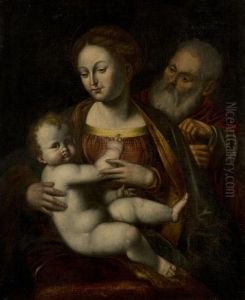Tommaso Bona Paintings
Tommaso Bona was an Italian artist, primarily recognized for his contributions to painting and graphic arts. Born in 1906 in Locarno, a town in the Italian-speaking part of Switzerland, Bona's early life was surrounded by the rich European art culture, which had a profound influence on his artistic development.
Bona's artistic journey began in earnest when he moved to Milan, a city with a vibrant art scene that served as a fertile ground for his creative aspirations. During the 1920s and 1930s, he studied at the Brera Academy, one of the most prestigious art institutions in Italy. There, he was exposed to various art movements and styles, from the traditional to the avant-garde, which would later influence his artistic style.
Throughout his career, Bona exhibited versatility in his works, exploring different themes and techniques. He was known for his figurative paintings, which often depicted rural scenes, portraits, and social themes, reflecting the realities and complexities of life in Italy during the 20th century. Bona's work was characterized by a strong use of color and a dynamic composition, blending elements of realism with a more expressive and sometimes abstract approach.
In addition to painting, Bona was an accomplished graphic artist. He produced illustrations for books and periodicals, which showcased his skills in drawing and printmaking. This aspect of his work was well-received, and he was commissioned to create graphics for various publications throughout his career.
The impact of World War II and the post-war period marked a significant phase in Bona's life and work. The socio-political changes during this time were reflected in his paintings, as he delved deeper into social commentary through his art.
Tommaso Bona continued to paint and exhibit his work until his death in 1979. His contributions to Italian art have been recognized through posthumous exhibitions and retrospectives, which celebrate his legacy as a painter and graphic artist. Bona's works are part of various collections in Italy and beyond, ensuring that his artistic voice remains a part of the dialogue on 20th-century European art.
